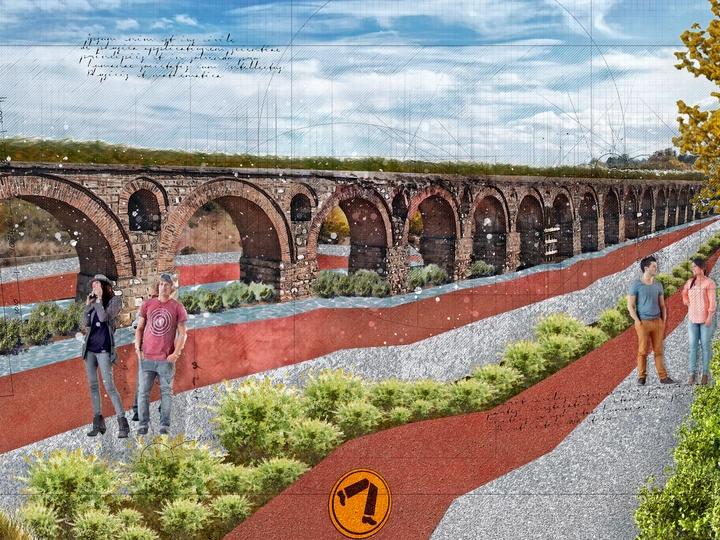Water revives urban life, too!

Arbresha Ibrahimi
Faton Kalisi
Mimoza Klekovska
We are a multidisciplinary team of architects, engineers, and academics united by a shared vision of sustainable, heritage-conscious urban regeneration.
Faton Kalisi is an architect and interior designer with international experience in North Macedonia, Belgium, Germany, and the USA. His work focuses on material innovation and sustainable interior architecture. He is highly skilled in 3D visualization and spatial planning, with a deep interest in reducing environmental pollution through design.
Dr. Mimoza Klekovska is an experienced urban planner, professor, and technical scientist with a background in architecture and engineering. Her work spans private practice and academia, including years of teaching at AUE-FON University. She currently works at the Municipality of Karpoš, bringing her expertise in spatial planning, design, and technology to the public sector.
Dr. Jasna Grujoska-Kuneska is an architectural engineer specializing in earthquake engineering and the conservation of cultural heritage structures. She is a lecturer at the International Balkan University, with a rich portfolio of academic research, international conference participation, and practical engagement in structural diagnostics and preservation of historical monuments.
Dr. Arbresha Ibrahimi is an architect and researcher whose PhD work focused on the influence of museums and cultural buildings on urban identity and cohesion. She has taught architecture at multiple institutions and collaborates with the World Design Organization. Her professional and academic pursuits bridge community-centered design and urban regeneration.
Together, we bring diverse but complementary perspectives to contemporary architectural challenges, rooted in sustainability, heritage preservation, and community impact.
The Skopje Aqueduct is a remarkable cultural monument in North Macedonia, stretching 386 meters through the northern part of the city. Despite its cultural, historical, and architectural importance, it has long been disconnected from social urban life and its original purpose. This proposal aims to reintegrate the aqueduct into the urban fabric of the city, transforming it from an isolated monument into a public space and significant landscape asset. A design progression matrix was utilized as the conceptual framework and explored the aqueduct through three interrelated, time-based lenses: retrospectively, with an investigation into its historical context and heritage systems that shaped its condition; contemporarily, with an investigation into its proximate meaning, effect on users, and opportunities for implementation; prospectively, with an investigation into long-term ramifications, including adaptive reuse and future urban and ecological potential. The proposal employs international precedents such as Pont du Gard in France and Bennerley Viaduct in England, applying them to Skopje’s cultural, spatial, and environmental context. The origin of the aqueduct is debated—Roman, Byzantine, or Ottoman. Rather than seeking a definitive answer, we embrace this uncertainty and transform the aqueduct into a living timeline, where the arches symbolize different historical moments. It is interpreted as three segments, each linked to a specific period. To enhance functionality, carefully planned walking paths are proposed along the aqueduct, allowing visibility and safe distance. Resting zones with signage and QR codes are introduced. A third segment recalls its original water use through reflective channels at its base. Native vegetation is proposed to support ecological regeneration. Lastly, the aqueduct serves as a framework for cultural gatherings through minimal, non-invasive installations. It becomes a living landscape, reconnecting history, people, and nature.